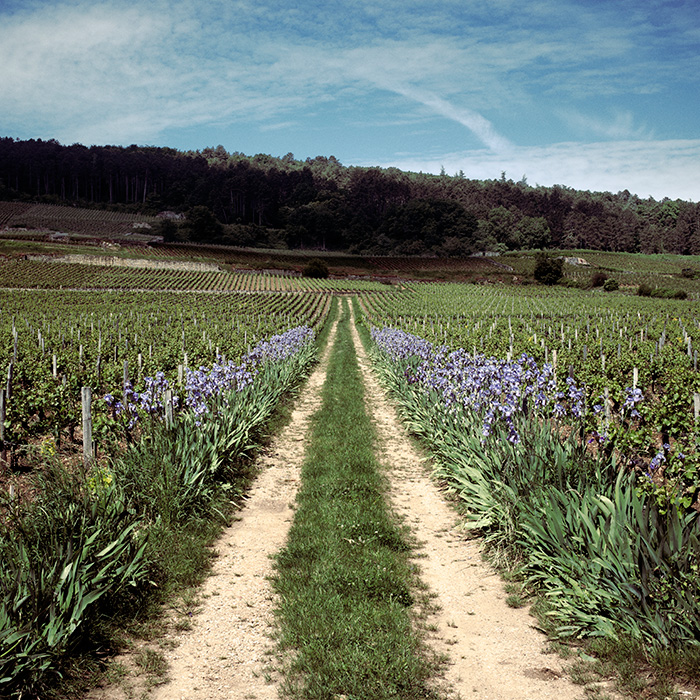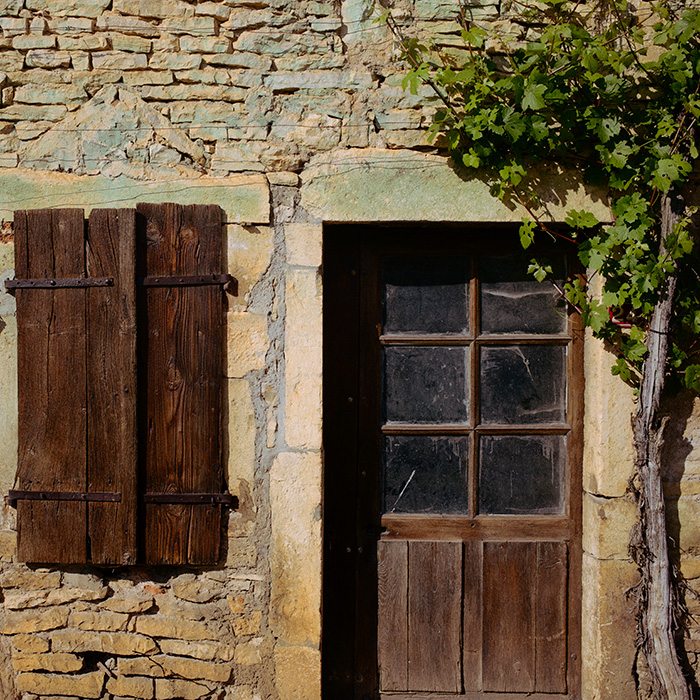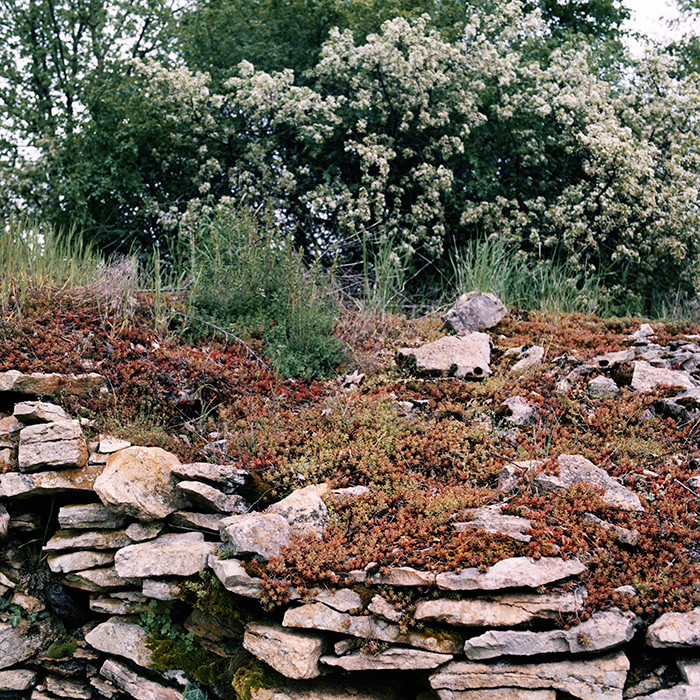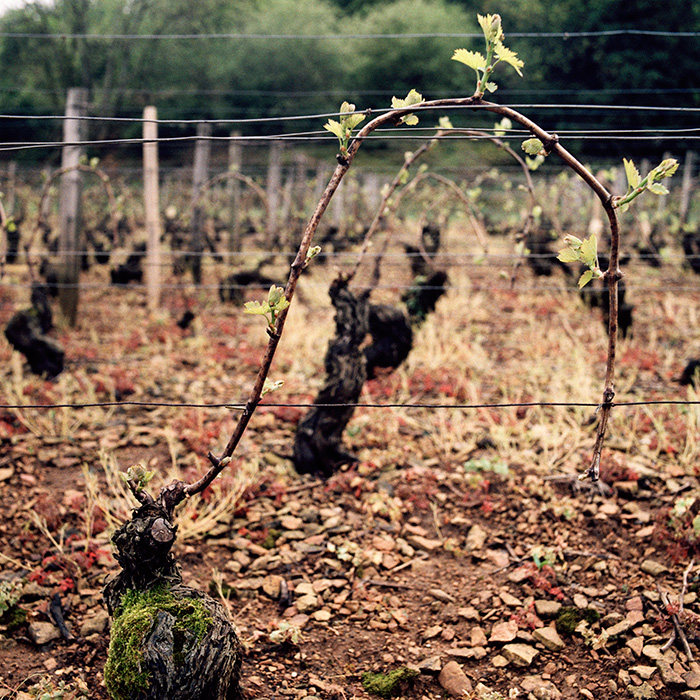Burgundy: taking stock
Author: Jasper Morris MW

The Côte de Nuits. Photograph: Jason Lowe
“Well the thing about Burgundy, young Morris, is that you simply can’t rely on it. Not like Claret you know. The whites aren’t bad of course but the reds are pretty flimsy.” At the start of my professional wine-buying career only the keenest aficionados were interested in Burgundy. Most importers were happy to settle from a range of the better appellations as provided by one or two merchants (négociants). Berry Bros. & Rudd’s offering was largely under the company’s own label and came from a handful of different négociant houses – frequently from Prosper Maufoux, based in Santenay, and Doudet-Naudin from Savigny.
The expression “good, hearty Burgundy” was in common use in past decades. Indeed the heartiness, if not the goodness used to come from the admixture of juice from outside Burgundy, typically from the deep south of France or Algeria. Light vintages might require this bone-setting red, and then the good vintages needed to be in line with the others. This style of Burgundy may well have continued to be shipped to the UK until our accession into Europe, whereas stricter rules applied within the Community after the Treaty of Rome.
Certainly by the 1970s a very different style of Burgundy was prevalent. Now the watchwords were “finesse” and “elegance”, but in point of fact the wines were frequently altogether too light. Not only had there been a reaction to the adulterated reds of the past but a long period of chemical pesticides and herbicides in partnership with chemical fertilisers was damaging the health of the soil and indeed the balance of pH in the grapes and wines. The wines might have been pure and they might have been fine-boned but they could be fragile, even undernourished.
The 1980s saw the start of a revolution which has brought about the golden age of Burgundy. We will get to the technical aspects of this later, but it all began with the people. Prior to this time, the vast majority of Burgundy seen on the export markets came from the leading merchant houses – I do remember an early visit to a major figure in Beaune who told me firmly that, “Monsieur, in Burgundy we are four: ourselves, Jadot, Drouhin and Bouchard”. There were also some useful co-operatives for inexpensive wine and a limited number of top domaines, one or two in each of the best known villages. The trade in Burgundy was becoming fossilised, with the marketing centred on the region’s glorious past and its historic pageantry.
But all this was on the point of changing. A new generation of young growers was about to step up to the plate. Some were the sons and daughters of the well-to-do families in Burgundy, whose parents may or may not have been bottling some or all of their own produce, while their vineyards were frequently managed by sharecroppers (metayeurs). These young vignerons, born in the late-1950s, were the ones I met on my first trip to the region in 1981. It was possible to knock on doors and get allocations from domaines which have now achieved cult status: Dominique Lafon, Christophe Roumier, Etienne Grivot and Ghislaine Barthod for example. Anne-Claude Leflaive and Eric Rousseau belong to the same generation, though their domaines were already known internationally. Other stars such as Denis Bachelet, Denis Mortet, Etienne de Montille are only a little younger.

Photograph: Jason Lowe
What was different? This was the first generation that trained together at the Lycee Viticole (“le viti”) in Beaune, who tasted in each other’s cellars, who began to understand what Burgundy could be – rather than just accepting the status quo inherited from the previous generation. Later on they began to travel abroad, to present their wines, to taste Pinots and Chardonnays being made in California, New Zealand and elsewhere, perhaps to consult at wineries in the New World, certainly to receive young interns from around the globe to work in their own cellars.
The 1960s had been a difficult decade on the weather front, with disastrous years in 1963, 1965 and 1968. The 1970s were not easy either, though 1971 and 1978 were both very fine, indeed the latter a reference point; 1976 also has provided some fabulous, long-lived wines – but also plenty that did not turn out well in this exceptionally hot, dry year.
During the 1980s the modern era of red Burgundy began to fall into place – it would take a while for all the improvements to filter through into the wines, but the seeds were there. The breakthrough vintage, though, was perhaps 1985: it was certainly the first time I heard the phrase, “the only way to make a bad wine this year is to do it deliberately”. By the 1990s, Burgundy had really found a new rhythm which heralded its golden age.
On the technical front we have seen considerable advances in both vineyard and cellar. Herbicides are largely a thing of the past and pesticides and other chemical treatments much rarer than they used to be. A key element has been the move towards ploughing vineyards, an essential prerequisite to making high-class wine, except in circumstances where deliberate grassing between the rows is deemed appropriate. Nowadays, it is rare to see vines that have not been at least occasionally ploughed and the microbial life of the soil, deemed by Claude Bourguignon to be less active than the Sahara desert when he first came to Burgundy, is now clearly much healthier.
The biggest factor in the cellar is the widespread use of the sorting table, a phenomenon which has spread rapidly since the Millennium. In earlier times, producers would use pretty much all the fruit that could be picked, and if that included some rotten or otherwise faulty grapes, then too bad – that was just the nature of the vintage. (Years such as 1983 could have turned out very differently two decades later!) Today, grapes will be sorted once in the vineyard, again on arrival at the cellar, and possibly, at some domaines, a third time after de-stemming. Top-quality grapes are, indeed, essential to top-quality wine.
Many other techniques come and go, finding favour for a while in response to a particular problem, being widely “discovered” and shortly thereafter exaggerated, then relinquished in favour of the next trend. At the moment the tendency is for a little less new oak and a little less extraction, two decisions of which I heartily approve.
Swaying backwards and forwards over the last 35 years – or indeed century and a half – is the question of using stems in red wine vinification. In the 1980s, the domaines which did vinify the whole bunches, and not just the de-stemmed grapes, were few and celebrated for their style – Domaine de la Romanée-Conti, Leroy, Dujac and Domaine de l’Arlot for example. Henri Jayer was emphatically against the inclusion of stems and that was the majority view. Now, since his death, and with the effects of climate change, there has been considerably more interest in fermenting the whole bunches rather than just the de-stemmed grapes. The use of the stems is felt to freshen up wines which might risk otherwise appearing over-ripe in both taste and texture.

Gevrey-Chambertin’s unpretentious Les Evocelles vineyard (its name comes from Les Brosselles, meaning “scrubland”). Photograph: Jason Lowe
So far we have concentrated on Burgundy’s glorious red wines, but of course the region is deservedly famous for its whites as well. I remember an article, I think in The Times, by the wine-loving philosopher Roger Scruton discussing the rivalry of Bordeaux and Burgundy – his point was that we should be looking at white Burgundy rather than red for the region’s finest wines. I thought it an excellent article, and cut it out – only to see it a couple of weeks later appearing in Private Eye’s “Pseuds Corner”.
The palm for the greatest dry white wine on Earth is usually given to Le Montrachet, supported by other wonderful white wines of Burgundy – though some (and I can be tempted) will push the claims of the Riesling grape. There were some glorious vintages available from the 1970s, especially 1979, when I started out, and plenty of enjoyable wines made through the 1980s. However the great success of red Burgundy may have damaged the whites as producers started looking for elegance, throwing the baby out with the bathwater.
Chardonnay is a muscular grape, not a ballet dancer, and attempts to produce a very pure, fine style of white Burgundy have missed the point. From the mid-1990s, the majority of Burgundy’s white wines (and indeed some from other regions) have lost their ability to age, oxidising prematurely. Will they get this back? I hope so, and various researches into methods of pressing the grapes, techniques during barrel ageing, sulphur levels and closures should be helping to restore the former glories.
The Market
Arguably the biggest change for Burgundy between then and now is in the market place. Partly this is due to the expanding popularity of Burgundy around the globe, but also to how wines are traded.
A generation ago, the UK and USA were vying for the top spot as importers of Burgundy (it was usually the US by value and the UK by volume), while in the Far East only Japan had really cottoned on to the glorious subtleties of Burgundy. Singapore also was a sophisticated market on a small scale, but very little was sold or drunk in Hong Kong or China. Indeed, I remember an early visit to Hong Kong about 10 years ago. We planned a Burgundy dinner at a relatively up-market French restaurant. We had chosen six wines so the restaurant proposed a six-course menu, pairing one with each, thus ending up with 1993 Domaine de la Romanee-Conti Richebourg to accompany dessert!
Nowadays, a huge amount of very fine Burgundy is being drunk in Hong Kong, Taipei and Shanghai, to name only three vibrant centres of wine appreciation, and by people who really understand what they are drinking and just how good it is. This level of wine knowledge and understanding has arrived extremely rapidly, in a region which has the disposable income to act on what it wants. Furthermore, many wealthy wine lovers – wherever they may live and work – are experienced travellers who source their wines from all round the globe. Fine wine prices are now easily visible, both through companies’ own web pages or applications, and through such sites as wine-searcher.

The buds breaking in spring as the vines’ first tender leaves unfurl. Photograph: Jason Lowe
It is not just because of these new markets opening up that Burgundy has joined the ranks of the “collectibles”. There are now market prices for the top wines from the most famous producers, even though there may be so little stock around that it is hard to define a firm level. In my younger days in wine it was possible to wander into a store and pick up bottles of Rousseau Clos St Jacques or Chambertin for £30 to £60, and I see I bought some Coche-Dury Meursault from the early 1980s for about a tenner a bottle. Prices for these iconic names were changing anyway, but it was with the stellar 2005 vintage that the phenomenon emerged of rare wines being listed (perhaps just one six pack) at hugely inflated prices, and for that listing to be deemed as forming the market price.
Then, with interest in Bordeaux falling way dramatically after the overpricing of the 2009 and 2010 vintages, Burgundy came more into focus on the investment side of the market – a great shame, since though one can argue that many Bordeaux producers are keen to see their wines trading at the highest possible prices, this is true of only a very few Burgundians.
Meanwhile, at the more “everyday” wine end of the scale, there has also been steep pressure on pricing because of disastrously small crops, especially in the Cote de Beaune in 2012 (hail), 2013 (hail), 2014 (hail) and 2016 (hail and frost). Is this a meteorological trend which will continue, or just an unusual run of bad luck? I am not going to risk a definitive answer. The difference, however, between this recent experience and a similar run of problem years in the 1960s, is that it is quantity which has been affected and not quality, as producers now know not to include any compromised grapes. The commercial situation for many of them however is very tricky indeed at the moment.
So where are we now, and where are we headed? Overall, it is fair to say that the red wines of Burgundy have never been more consistently fine than over the last 25 years. There are so many magical producers of fabulous wines, many of which are accessible relatively young, but which nonetheless have as great a capacity to age as ever before. The whites are not in such a good place: certainly there are still some very good wines, and like the reds they have been made to be appreciated from an early age: but, alas, their ability to mature gracefully over decades is no longer to be expected.
The market may need a correction: I would love to see less attention given to the ultra-blue-chip wines, the grandest of Grands Crus from the elite producers; a widening of interest across the whole range of Burgundy, with a little more love shown to such admirable appellations as Marsannay and Nuits-St Georges, Santenay and Maranges, amongst the reds, and a return to greater consistency amongst the whites. Even more, I devoutly hope for a return to more settled weather conditions, so that producers do not lose half or more of their crop several years in a row.
Of one thing I am sure: the prospect of opening the next bottle of Burgundy will continue to bring a smile to the face and a tingle of anticipation.
Red wines – top vintages to lay down
The finest vintages of the last 20 years are 1999, 2005, 2009, 2010 and 2015. Of these 1999 and 2010 are already enjoyable to drink but the best wines still have an upside in quality terms for keeping. Some 2009s may also be approachable though I think most will benefit from significantly longer ageing. Overall, 2005 is probably the greatest young vintage of my career, for the exceptional density and longevity of the wines. It is possible that 2015 may rival ‘05 since early tastings also suggest very dense, powerful wines, though perhaps with some of 2010’s charm as well.
Red wines – best vintages to drink now
It is much better to drink a lesser vintage at the right moment than a great one too early. Obviously much will depend on the status of a given wine, so recommendations have been divided into three categories. My very favourite vintages for drinking now are marked with *.
Generic Burgundy and “lesser” village wines: 2013, 2012, 2011, 2010*, 2005
Village wines and minor Premiers Crus: 2011, 2010*, 2009, 2005*, 2003, 2002*
Top Premiers and Grands Crus: 2008, 2007, 2003, 2002*, 2001, 1999, 1996, 1993*, 1990
White wines – best vintages
2014: This an all-round consistently beautiful vintage for whites, and all but the grandest are accessible now. It works at all levels and across all the districts of Burgundy.
2012: Very fine in Chablis, this year has produced some firm, energetic wines in the Cote d’Or.
2011: This is beginning to be very enjoyable now from the Cote d’Or, less good in Chablis.
2009: A year that will not be on most people’s lists but the small percentage of growers who picked early enough made glorious wines.
Burgundy 2015 en primeur is now live on bbr.com.



Delighted No. 3 is coming back. Got it from 1968 until it ceased publication 22 years ago.
Will a hard copy be posted to customers?
Dear Dr Tant,
You can pick up a copy in either of our shops, but I have put a copy in the post for you today.
Kind regards,
Sophie
Thanks Sophie.
Darryl.